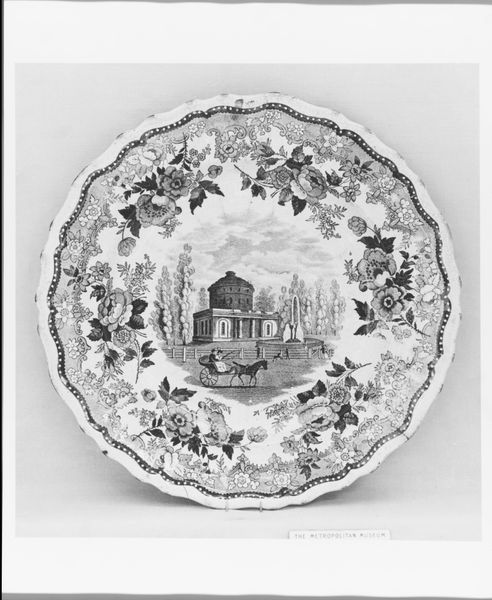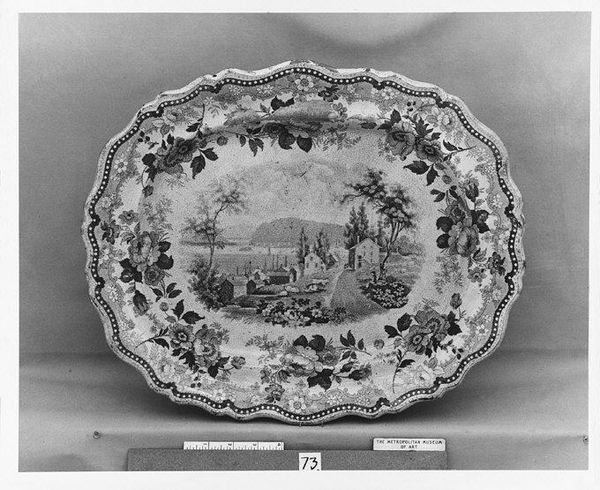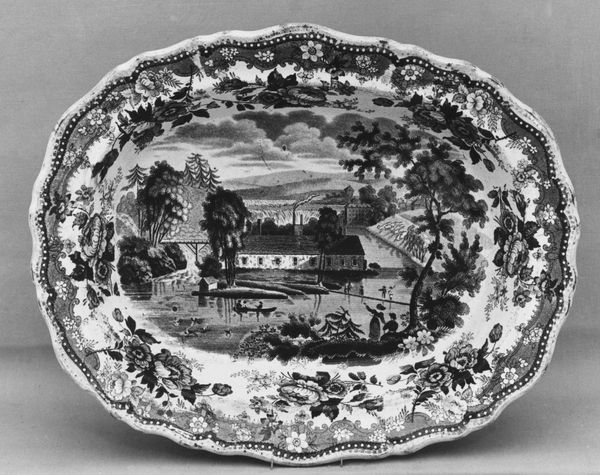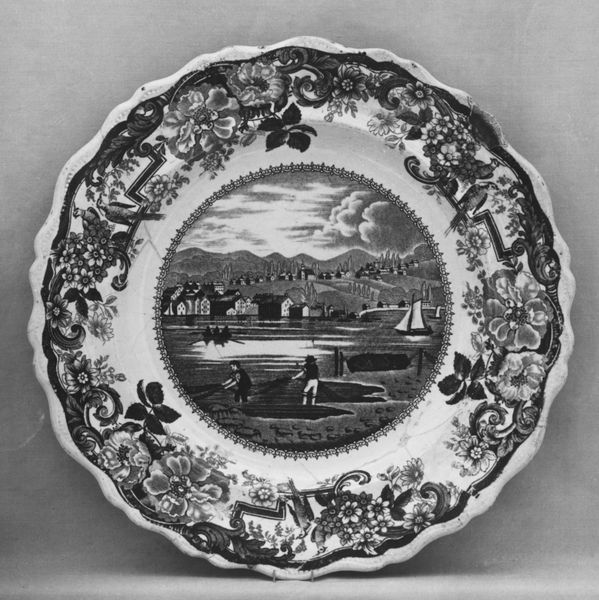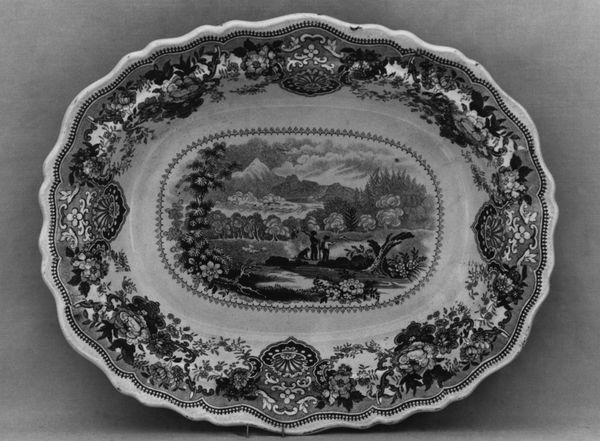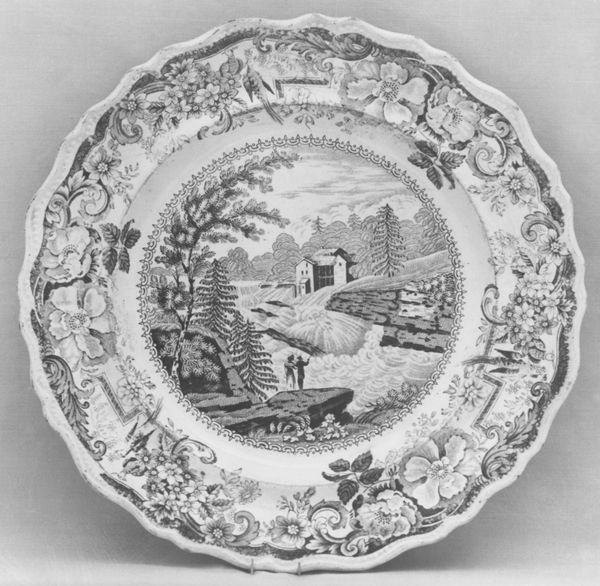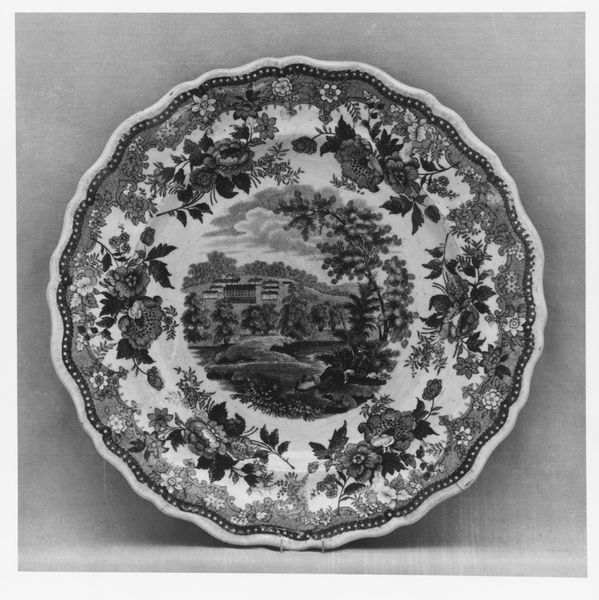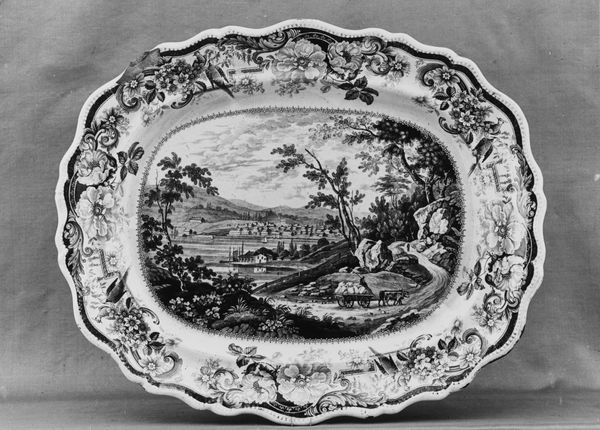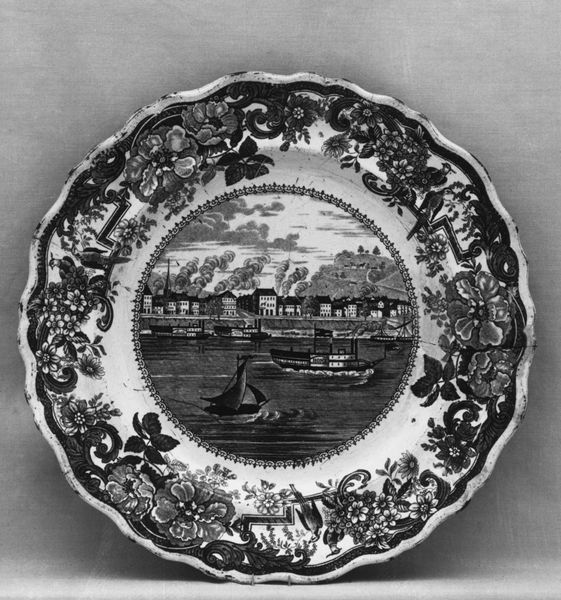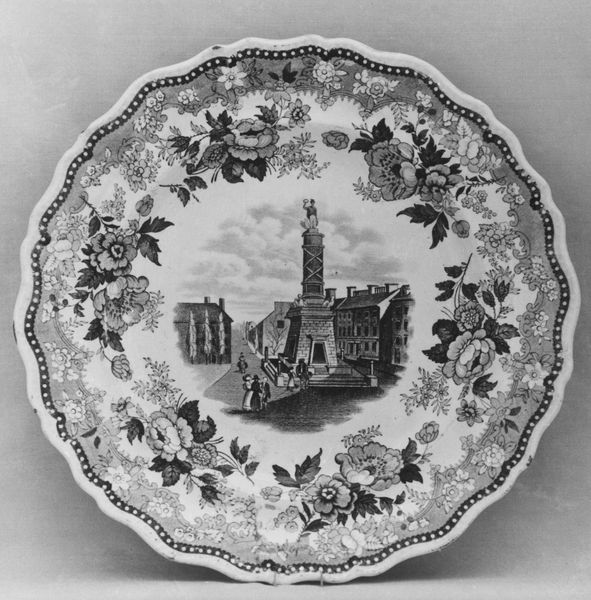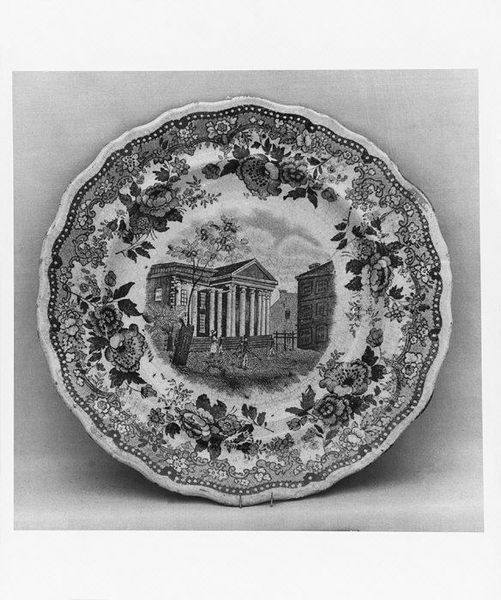
print, ceramic, earthenware
# print
#
sculpture
#
landscape
#
ceramic
#
earthenware
#
stoneware
#
cityscape
#
genre-painting
#
decorative-art
Dimensions: Diam. 10 5/8 in. (27 cm)
Copyright: Public Domain
Editor: Here we have a plate dating from 1828 to 1838, created by Job and John Jackson. It's made of earthenware, with a print transferred onto it. The image itself features a building, possibly a civic one, surrounded by what looks like a cityscape and decorative floral elements. What strikes me most is how a functional, everyday object like a plate becomes a canvas for depicting both civic pride and aesthetic beauty. What are your thoughts on it? Curator: It's precisely this juxtaposition of the everyday and the representational that interests me. Let’s consider the materials and processes: Earthenware, often associated with functional, mass-produced goods, is here elevated through the transfer print technique. This process, which allows for the relatively quick replication of images, democratizes representation. How does this contrast with traditional, hand-painted ceramics? Editor: Well, hand-painted ceramics feel more unique, perhaps even precious. The print makes this accessible, reproducible. Almost like an early form of mass media. Curator: Exactly! This plate speaks to a changing relationship between labor, materials, and consumption. The transfer print reduces the reliance on highly skilled labor, potentially impacting the value assigned to craftsmanship. And what about the imagery itself? Editor: You mean the building and cityscape? It looks like some kind of civic building or statehouse… and the flowers seem almost ornamental in their arrangement around the central scene. Curator: Consider that arrangement not merely as ornament but as framing, a deliberate act of placing this building—and the values it represents—within a digestible, consumable format. The floral border becomes a commodity aestheticizing the political. Where was this plate likely manufactured, and for whom? Editor: Given the timeframe and materials, I would guess Staffordshire, England, and possibly for the rising middle class with an interest in decor and potentially civic awareness. Curator: Precisely. This plate, therefore, is not simply decorative; it's a material artifact reflecting complex social and economic forces. The labor of producing the earthenware, the printing, the image it carries, all point to a society in transition. I hadn’t thought about it in that much depth initially! Editor: I agree; analyzing its materiality and production methods reveals a surprisingly complex story about art, labor, and society during the Industrial Revolution.
Comments
No comments
Be the first to comment and join the conversation on the ultimate creative platform.


